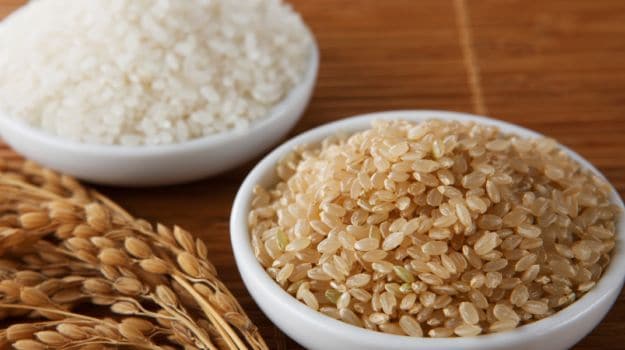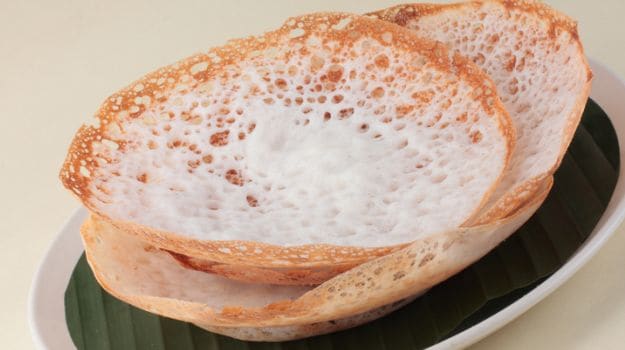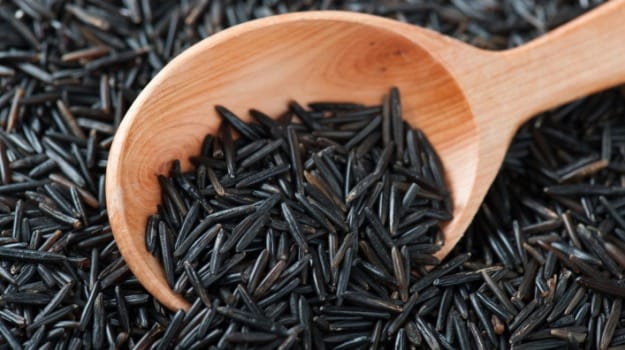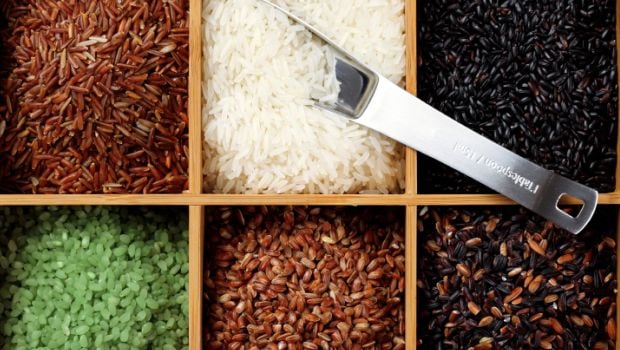It's not just Tamil Nadu, the organic and health food waves have seen quite a few traditional rice varieties reappear on shelves across South India. We put the spotlight on some of the best known rice varietals from South India - white, brown, red and even black. Many of these might be available at your local supermarket or organic store:5 Types of Rice - the Different South Indian Varieties
1. Polished White Rice
It's tough to imagine that the ubiquitous polished rice that most people just call 'white rice' is a fairly modern phenomenon. Most old timers remember how white rice quickly overtook unpolished rice varieties because of its perceived quality and also of its 'neutral' taste. Polished rice cooks quicker and also complements most of the traditional rice accompaniments - from rasam to sambar, better. Tamil Nadu's best known version is Ponni rice and there's Sona Masuri that is quite popular in Andhra Pradesh. Polished versions unfortunately take away some of the key nutrients inherent in rice.

2. Brown Rice
A few years ago I visited a school mate's large textile unit in Arupukottai near Madurai. We dined at his staff canteen; it was the first time I sampled what the locals call Kai Kuthal Arisi (hand pounded rice). The morsels were slightly larger and chewier, almost reminiscent of Arborio rice used in an Italian risotto. That one meal experience was all it took for me to make the permanent switch from white to brown rice. The key difference is that only the outer shell of the paddy is removed, leaving the bran intact. It makes no difference in calorific values but makes a huge difference in key nutrients like magnesium, phosphorus, niacin and vitamin B6. The rice's low glycemic index makes it more suitable for diabetics. It takes slightly longer to cook - the hand pounded brown rice version I use typically takes 15 minutes to pressure cook (the cooking time for white rice is about 10 minutes). This variety works best for rice along with sambar or rasam and can also be used for idli/dosa batter as well. If you are looking at making a big change in your diet, brown rice is a compelling substitution option.

3. Palakkad Matta Rice
One of Kerala's most iconic rice varietals and protected with its own GI (Geographical Indication), this rice is primarily grown in the Palakkad region of Kerala that borders Tamil Nadu. This rice varietal has come to typify Kerala's red rice and parboiled rice varieties. This coarse red rice varietal is rich in vitamins, calcium and magnesium; these nutrients are retained thanks to the 'par boiling' process. It's not just commonly used in Kerala but I've also spotted this variety in Sri Lanka. Aside from cooking this as a rice staple it's also used in other rice-based dishes like appams and idlis.

4. Fragrant Biryani Rice
Aside from Hyderabad, South India's biryani cities have one key ingredient in common - small grain rice. Seeraga Samba rice is the quintessential ingredient in the Dingidul-style biryani; it's also used in the Ambur - my favourite style of biryani, in Tamil Nadu (although Basmati rice is widely used too). The rice takes its name from Jeera (Seeragam in Tamil) because the small (much smaller than other rice varieties) ovular grains share an uncanny resemblance to jeera (cumin seeds). The rice is usually cultivated in the Samba season (typically August to January). The traditional Malabari biryanis in the Kozhikode region use a similar small grain varietal that packs great flavours - Seeraga Sala rice (also known as Kaima rice) that's grown in Kerala and also outside the state but used almost exclusively in Malabar region. Most of the small grain biryani rice varietals currently available tend to be polished rice versions without the nutrients found in brown rice.
5. Kavuni Arisi (Black Rice)
Almost unique to the Chettinad region in Tamil Nadu and evidence of the Chettiar community's strong links with Burma, black rice is prevalent across South East Asian cultures and is a rich source of Iron and Vitamin E. The bran hull of black rice has one of the highest levels of anthocyanin antioxidants found in any food (even more than blueberries). A simple rice pudding - the rice is soaked overnight, pressure cooked and tossed in ghee, sugar and a hint of cardamom, is a popular Chettinad dessert.

About the Author:
Ashwin Rajagopalan is a cross cultural training expert and lifestyle writer. When he's not writing about food, he thinks about gadgets, trends and travel experiences. He enjoys communicating across cultures and borders in his weekday work avatar as a content and editorial consultant for a global major and one of India's only cross cultural trainers.
Disclaimer:
The opinions expressed within this article are the personal opinions of the author. NDTV is not responsible for the accuracy, completeness, suitability, or validity of any information on this article. All information is provided on an as-is basis. The information, facts or opinions appearing in the article do not reflect the views of NDTV and NDTV does not assume any responsibility or liability for the same.
About Ashwin RajagopalanI am the proverbial slashie - a content architect, writer, speaker and cultural intelligence coach. School lunch boxes are usually the beginning of our culinary discoveries.That curiosity hasn’t waned. It’s only got stronger as I’ve explored culinary cultures, street food and fine dining restaurants across the world. I’ve discovered cultures and destinations through culinary motifs. I am equally passionate about writing on consumer tech and travel.







